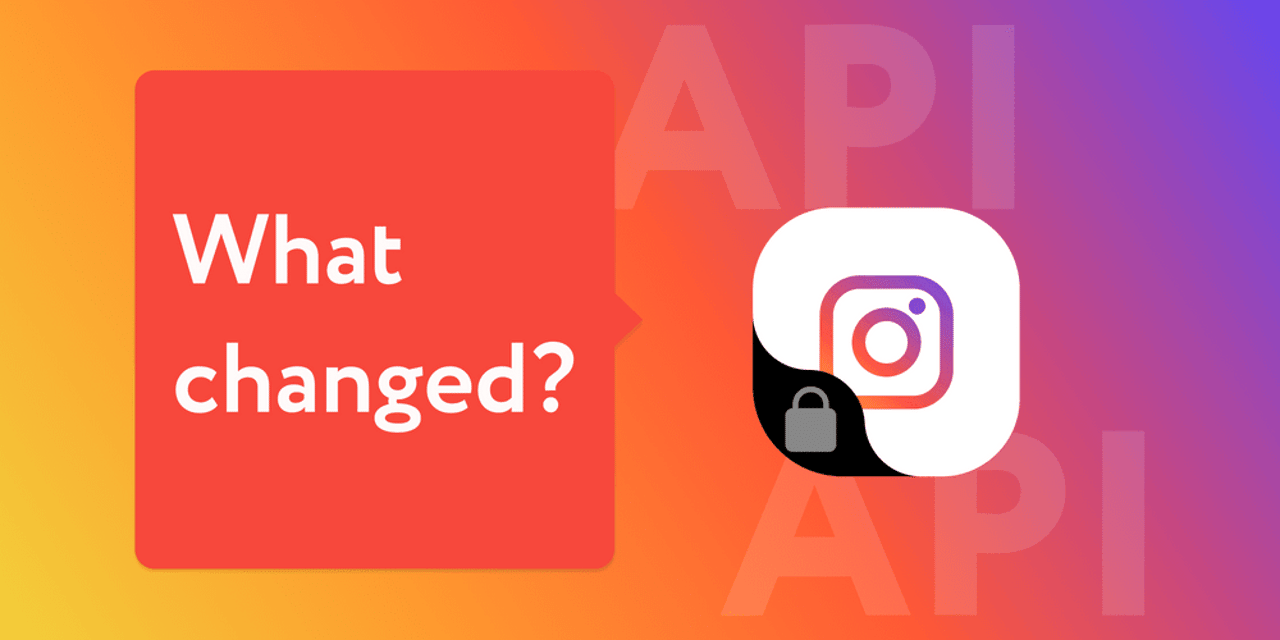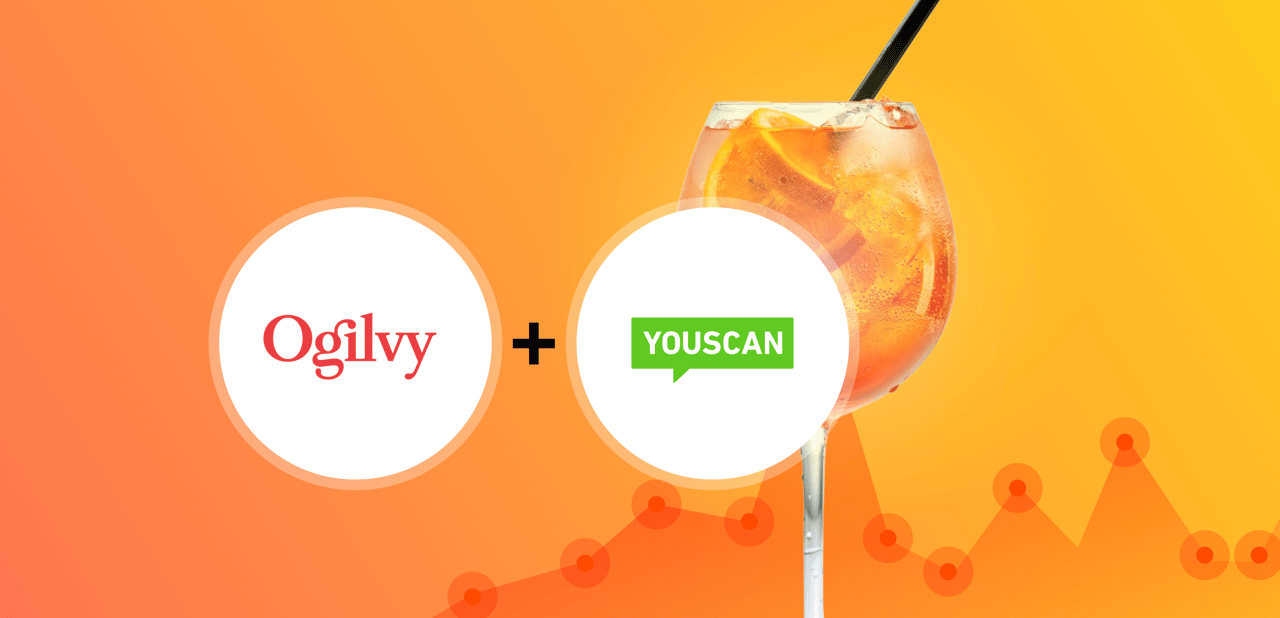How Instagram API Changes Influence Social Media Listening Approaches

Instagram has announced some major changes to its API, which meant that anyone who used Instagram data in their work had to make some adjustments. This has sent ripples through the social media marketing community, who rely on Instagram data to get valuable insights about their audience through social media listening.
And how you can adapt to these changes by looking for qualitative insights instead of quantitative ones!
Last year, Instagram has announced some major changes to its API, which meant that anyone who used Instagram data in their work had to make some adjustments. This has sent ripples through the social media marketing community, who rely on Instagram data to get valuable insights about their audience through social media listening.
In this post, we will go over Instagram's API changes and what they meant for the social media marketing field as a whole, and how you can set yourself up for success with a new approach to social media listening through visual content analysis.
What changed in Instagram's API and what these changes mean for social media marketers
First, let's briefly go over what API is. In its simplest form, API, or application programming interface , is like a dictionary of terms that allows two applications to communicate with one another and work together (For example, a social media management tool will use a social network's API in order to be able to schedule and publish posts to that social network).
In January 2018, Instagram has announced their plan to retire the existing API and launch a new Graph API, which meant that some features would eventually deprecate (no longer exist) while new features rolled out. These changes affected any tool that used Instagram data in their work — especially social media monitoring services, since the new changes meant that third-party tools would no longer be able to access much of Instagram's user data. The API change limited the ability to track other people's likes, track someone's follower count, and tracking previously liked posts or profiles.
While seemingly restrictive, these changes were ultimately introduced to improve Instagram users' experience on the platform and protect their privacy. They also meant fewer bots on Instagram — great news for users or social media analysts who were tired from trying to guess how many likes or followers on the platform are real. At the end of the day, a happy user stays on Instagram, spends more time on the platform and produces more content, which is good news for social media listening professionals.
Thus, social media data, including data from Instagram, remains an essential source of consumer insights. There is still a massive amount of public content available to social marketers to mine for meaningful and actionable insights. The trick is to look beyond follower counts and likes — which some are forced to do anyway, since Instagram is now running a pilot to remove public like counts in several countries! — and instead, look at the shared content itself.
One insight is worth a thousand likes
We have all heard that a picture is worth a thousand words — but with tools like YouScan's Visual Insights, you can also see that a picture can provide numerous insights into real-life use cases of products, inspire new product and collaboration ideas, measure effectiveness of ad campaigns, and many more.
Let's take a look at a few of these insights that a well-analyzed Instagram photo alone can provide.
Novel use cases and new product ideas
The analysis of user-generated visual content can inspire brands to create new products, drawing ideas from novel use cases presented to them by the customers themselves.
Let's imagine that we are on the McDonald's product innovation team, looking to modernize some of our menu offerings.
If we take a look at the Visual Insights using the "Food" or "Eating" filters, we can see a lot of examples of creative ways to modify McDonald's meals - for example, by making a keto (from "ketogenic diet," one that causes the body to burn fat rather than carbohydrates) version of a Big Mac.
"Clean" eating diets are all the rage these days, but people still want to enjoy the familiar flavours of McDonald's. Such user-generated content can help you adjust your offers to your customers' dietary needs.
Your research in user-generated content can also provide ideas for expanding into new product lines. For example, let's say you are a snack company looking to dip into a new sauce flavour (see what we did there?).
Using Visual Insights in your social media listening, you can take a look at some of the creative ways your online fans are serving your chips by applying various "Object" filters in your monitoring.
A filter for "Dessert" reveals how some people are baking with your chips.
Perhaps it's time to think outside of the box and create a sweet dip for those lovers of the sweet'n'salty snacks?
If you are looking to introduce a new product line, why not ask those whose opinions matter the most? Your customers are already sharing their way of using your products that works best for them; you just have to pay close attention by examining that visual content with the right tools.
User-generated campaign creatives
Your customers' photos can also give you ideas for future creative for ad campaigns and brand assets. For example, what can be more appetizing than the look of a cold ice cream on a hot summer day?
Such photos of soft-serve ice cream are all the rage on Instagram. You can find them by searching for the "Frozen dessert" filter in Visual Insights.
You can make this common trend work for you in your next influencer campaign, or perhaps create a photo contest where people can win prizes just by taking the kinds of photos they are already posting to their social networks (For example, by offering a discount coupon for people who share their photos on Instagram).
You can also take note of user-generated visual content around your brand to create seasonal campaigns. For example, there seem to be a lot of recipes out there that use Ruffles chips to add that extra bit of texture to a tasty burger:
Why stop at being a barbecue side staple? Maybe this summer, a campaign could take your chips from the side(lines) to the main course. You can find seasonal recipes by finding season-appropriate filters under Scenes, such as "grass" and "beach" for the summer or "snow" in the winter.
A visual analysis of user-generated content about a brand can often lead to some surprising discoveries. For example, while reviewing the Converse example (more on that below), we noticed a lot of photos of expecting mothers donning Converse shoes:
Converse has come a long way from producing primarily athletic shoes to becoming a staple in every fashionista's wardrobe. But seeing it as a shoe of choice for some expecting mothers was, well… unexpected. Who knows what kind of campaign creative or new product idea can come from such a discovery? It's just yet another argument to support the importance of paying attention to your customers.
Collaboration possibilities
As much as some of us can hope for such a scenario, yours is not the only brand in your customers' lives. While competitor analysis is an important part of social media marketing, you can also take a different perspective on your competition — instead of fighting them, joining them!
For example, if you are an apparel brand looking to maximize your reach, you can see what other apparel brands often appear in photos of your product.
You can take a look at a few brands that appear next to Converse shoes in a setting related to a sporting activity (gym/fitness).
In YouScan's Visual Insights, you can actually search photos by Activity or Scene in order to only see photos in a gym setting by using filters like "Bodybuilding," "Sports," "yoga," to get photos like this:
There are quite a few photos that feature Gymshark apparel along with Converse shoes. If your target markets already overlap, perhaps a collaboration or a joint product offering can be an unexpected delight to those customers!
Finding a new target audience
What if, instead of letting a competitor share in the profits, you want to develop a new product for a certain demographic and would like to see which of your products already resonate with your new target audience.
For example, keeping with our sneaker theme, you might be looking to develop a new product line of Skechers shoes for kids.
Using the Person filter in Visual Insights, you can modify your gallery of social media posts to only see photos of children ("Toddler" or "Youth" in the Person filters) wearing Skechers shoes to see which products are popular with that demographic:
Now let's imagine the new product line is aimed at young athletes. You can refine your search by adding "athlete" in the Person filter to see photos of youth athletes.
You can use these real-life examples to inform your product design decisions for future innovations — all thanks to existing visual content from your fans!
Social image analysis as a new approach to social media listening
As you can see from the examples above, there are still plenty of consumer insights to be drawn from social media content. The trick is to develop a keen eye — and maybe recruit a good helper, like YouScan's social media monitoring tool — and look for qualitative insights, like real use cases and common surroundings, as opposed to quantitative ones, such as follower or like counts.
Instagram has changed its API and continues to make more changes as the platform grows and its user base expands and becomes more sophisticated — and it's only one example of many social networks doing the same. All these changes aim to make the user experience on the platform safer and more pleasant. Don't be afraid to meet your audience where they are and listen to what they try to express with their visual content!



